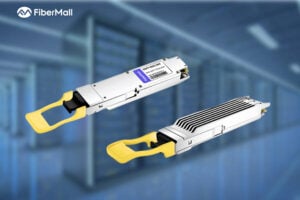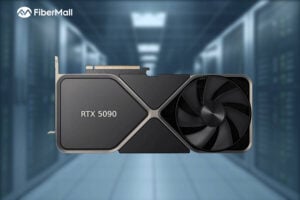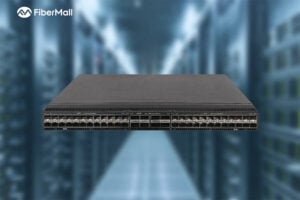- Felisac

John Doe
Answered on 6:44 am
Moving to 400G (400 Gigabit Ethernet) technology can bring a multitude of benefits for networks that need to effectively handle a steep increase in traffic demand, stemming primarily from video, mobile, and cloud computing services. Some of the essential benefits are:
Increased capacity and speed: 400G offers 4 times the bandwidth of 100G, greatly bolstering network capacity and throughput for data-intensive services and applications.
Efficiency and scalability: 400G is inherently more efficient because it can carry more information per transmission. This efficiency also provides future-proofing for providers as traffic demands grow.
Cost-effectiveness: Enable 2-4X lower cost and power/bit, reducing capex and opex. Even though the upfront capital expenditure might be higher, the total cost of operation can be reduced in the long run because you can move more data with fewer devices, leading to reductions in space, power, and cooling requirements.
Improved network performance: With greater speed and capacity, 400G technology reduces latency, providing an overall improvement in network performance. This is crucial for time-sensitive applications and can significantly enhance the user experience.
Support for higher bandwidth applications: Increase switching bandwidth by a factor of 4. Migrating from 100G to 400G systems increases the bandwidth per RU from 3.2-3.6T to 12.8-14.4T / RU. The rise in high-bandwidth applications, like Ultra High Definition (UHD) video streaming, cloud services, online gaming, and virtual reality (VR), require strong, stable, and fast network connections. 400G technology can provide the necessary support for these bandwidth-intensive applications.
Enables machine-to-machine communication: 400G technology is a powerful tool for enabling machine-to-machine communications, central to the Internet of Things (IoT), artificial intelligence, and other emerging technologies.
Supports 5G networks: The higher speed and capacity of 400G technology are ideal for meeting the demanding requirements of 5G networks, helping them to achieve their full potential.
Data Center Interconnect (DCI): For enterprises operating multiple data centers at multiple sites, 400G supports efficient and powerful data center interconnection, enhancing data transfer and communication.
Sustainability: 400G is more energy-efficient than its predecessors by providing more data transmission per power unit. This is a significant advantage considering the increasing global focus on sustainability and green technology.
Enable higher-density 100G ports using optical or copper breakouts. A 32 port 1RU 400G system enables 128 100GE ports / RU. This allows a single Top of Rack (TOR) leaf switch to connect to multiple racks of servers or Network Interface Cards (NICs).
Reduce the number of optical fiber links, connectors, and patch panels by a factor of 4 when compared to 100G platforms for the same aggregate bandwidth.
In conclusion, 400G technology presents a compelling solution for networks dealing with high traffic flows due to digital transformation trends. It builds the foundation for supporting the growing demand for data from businesses and consumers alike, making it an important tool in the era of 5G, and IoT.
People Also Ask
What is a Silicon Photonics Optical Module?
In the rapidly evolving world of data communication and high-performance computing, silicon photonics optical modules are emerging as a groundbreaking technology. Combining the maturity of silicon semiconductor processes with advanced photonics, these modules promise higher speeds, lower power consumption, and reduced costs. This in-depth guide explores the fundamentals, principles, advantages, industry
Key Design Principles for AI Clusters: Scale, Efficiency, and Flexibility
In the era of trillion-parameter AI models, building high-performance AI clusters has become a core competitive advantage for cloud providers and AI enterprises. This article deeply analyzes the unique network requirements of AI workloads, compares architectural differences between AI clusters and traditional data centers, and introduces two mainstream network design
Google TPU vs NVIDIA GPU: The Ultimate Showdown in AI Hardware
In the world of AI acceleration, the battle between Google’s Tensor Processing Unit (TPU) and NVIDIA’s GPU is far more than a spec-sheet war — it’s a philosophical clash between custom-designed ASIC (Application-Specific Integrated Circuit) and general-purpose parallel computing (GPGPU). These represent the two dominant schools of thought in today’s AI hardware landscape.
InfiniBand vs. Ethernet: The Battle Between Broadcom and NVIDIA for AI Scale-Out Dominance
The Core Battle in High-Performance Computing Interconnects Ethernet is poised to reclaim mainstream status in scale-out data centers, while InfiniBand continues to maintain strong momentum in the high-performance computing (HPC) and AI training sectors. Broadcom and NVIDIA are fiercely competing for market leadership. As artificial intelligence models grow exponentially in
From AI Chips to the Ultimate CPO Positioning Battle: NVIDIA vs. Broadcom Technology Roadmap Showdown
In the era driven by artificial intelligence (AI) and machine learning, global data traffic is multiplying exponentially. Data center servers and switches are rapidly transitioning from 200G and 400G connections to 800G, 1.6T, and potentially even 3.2T speeds. Market research firm TrendForce predicts that global shipments of optical transceiver modules
H3C S6550XE-HI Series 25G Ethernet Switch: High-Performance 25G/100G Solution for Campus and Metro Networks
The H3C S6550XE-HI series is a cutting-edge, high-performance, high-density 25G/100G Ethernet switch developed by H3C using industry-leading professional ASIC technology. Designed as a next-generation Layer 3 Ethernet switch, it delivers exceptional security, IPv4/IPv6 dual-stack management and forwarding, and full support for static routing protocols as well as dynamic routing protocols including
Related Articles

800G SR8 and 400G SR4 Optical Transceiver Modules Compatibility and Interconnection Test Report
Version Change Log Writer V0 Sample Test Cassie Test Purpose Test Objects:800G OSFP SR8/400G OSFP SR4/400G Q112 SR4. By conducting corresponding tests, the test parameters meet the relevant industry standards, and the test modules can be normally used for Nvidia (Mellanox) MQM9790 switch, Nvidia (Mellanox) ConnectX-7 network card and Nvidia (Mellanox) BlueField-3, laying a foundation for

What is a Silicon Photonics Optical Module?
In the rapidly evolving world of data communication and high-performance computing, silicon photonics optical modules are emerging as a groundbreaking technology. Combining the maturity of silicon semiconductor processes with advanced photonics, these modules promise higher speeds, lower power consumption, and reduced costs. This in-depth guide explores the fundamentals, principles, advantages, industry

Key Design Principles for AI Clusters: Scale, Efficiency, and Flexibility
In the era of trillion-parameter AI models, building high-performance AI clusters has become a core competitive advantage for cloud providers and AI enterprises. This article deeply analyzes the unique network requirements of AI workloads, compares architectural differences between AI clusters and traditional data centers, and introduces two mainstream network design

Google TPU vs NVIDIA GPU: The Ultimate Showdown in AI Hardware
In the world of AI acceleration, the battle between Google’s Tensor Processing Unit (TPU) and NVIDIA’s GPU is far more than a spec-sheet war — it’s a philosophical clash between custom-designed ASIC (Application-Specific Integrated Circuit) and general-purpose parallel computing (GPGPU). These represent the two dominant schools of thought in today’s AI hardware landscape.

InfiniBand vs. Ethernet: The Battle Between Broadcom and NVIDIA for AI Scale-Out Dominance
The Core Battle in High-Performance Computing Interconnects Ethernet is poised to reclaim mainstream status in scale-out data centers, while InfiniBand continues to maintain strong momentum in the high-performance computing (HPC) and AI training sectors. Broadcom and NVIDIA are fiercely competing for market leadership. As artificial intelligence models grow exponentially in

From AI Chips to the Ultimate CPO Positioning Battle: NVIDIA vs. Broadcom Technology Roadmap Showdown
In the era driven by artificial intelligence (AI) and machine learning, global data traffic is multiplying exponentially. Data center servers and switches are rapidly transitioning from 200G and 400G connections to 800G, 1.6T, and potentially even 3.2T speeds. Market research firm TrendForce predicts that global shipments of optical transceiver modules

H3C S6550XE-HI Series 25G Ethernet Switch: High-Performance 25G/100G Solution for Campus and Metro Networks
The H3C S6550XE-HI series is a cutting-edge, high-performance, high-density 25G/100G Ethernet switch developed by H3C using industry-leading professional ASIC technology. Designed as a next-generation Layer 3 Ethernet switch, it delivers exceptional security, IPv4/IPv6 dual-stack management and forwarding, and full support for static routing protocols as well as dynamic routing protocols including
